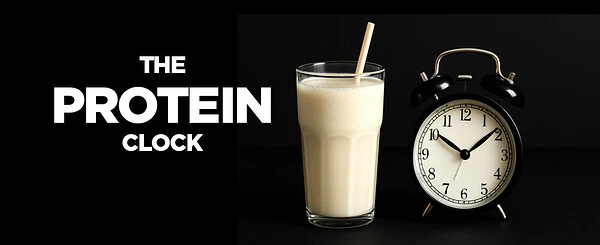The Protein Clock
Author: Chris Shugart
In the realm of nutrition, the discourse often centers around the quantity of protein consumption. However, an equally crucial aspect that warrants attention is the timing of protein intake. And the significance of this timing may not align with our preconceived notions.
It is my firm belief that every individual we encounter, whether acquaintance, stranger, or otherwise, has a lesson to impart. The nuance lies in the fact that many of these lessons come in the form of what not to do.
Consider your personal aspirations. Perhaps they encompass achieving a fit physique, fostering a robust relationship, and amassing a substantial savings. Now, cast your gaze around. Observe those who embody these traits. What behaviors and habits do they exhibit? Equally importantly, note those who lack these qualities. What are their actions? Both groups offer invaluable insights.
This is where “snapshot” studies prove to be invaluable. These studies select a particular parameter, such as leanness or adiposity, and conduct an in - depth examination of a large cohort of individuals, posing the question, “What are their dietary and lifestyle practices?”
A Specific Snapshot Study
The following snapshot study delved into the correlation between the even distribution of protein intake across meals and its implications for lean mass and strength in women. While the study was conducted on women, it is reasonable to assume that the findings may have some applicability to men as well.
Study Methodology
Researchers assembled a group of 192 healthy women and instructed them to meticulously record their dietary habits. The primary focus was to analyze how these women allocated their protein intake throughout the day. The question was whether this distribution had any impact on lean muscle development and strength.
To accurately assess the evenness of protein intake, the day was segmented into three distinct periods:
From waking until 11:30 AM
From 11:31 AM to 4:30 PM
After 4:30 PM
Lean mass was measured using Dual - Energy X - Ray Absorptiometry (DEXA), and various strength metrics, including handgrip strength and leg press strength, were also recorded.
Findings of the Study
The results clearly indicated a strong relationship between the evenness of protein intake and lean mass, strength, and muscular endurance in women:
Spreading protein intake evenly throughout the day optimizes the anabolic response to dietary protein, thereby enhancing muscle mass and performance. This even distribution ensures a consistent supply of amino acids to the muscles.
Women who concentrated the majority of their daily protein intake into one large meal or two meals had reduced lean muscle mass and strength.
Based on these findings, the researchers recommended that women consume 20 - 30 grams of protein per meal. It is important to note that the study participants were average women, and most had no prior experience in weight - training.
Practical Application of the Findings
Traditionally, we have been led to believe that the total daily protein intake is of greater importance than the timing of protein consumption. However, this snapshot study challenges this notion, demonstrating that the timing of protein intake indeed matters. Those who distribute their protein intake evenly throughout the day exhibit greater lean mass and strength compared to those who do not.
It is true that numerous studies have shown that consuming protein after weightlifting significantly impacts workout outcomes. This finding is not in conflict with the current study. Simply ensure that a portion of your evenly - distributed protein intake occurs post - training.
It should also be remembered that this study utilized a diverse group of healthy, average women. Other research indicates that the guidelines may vary for women engaged in resistance training. Female weightlifters are better served by aiming for approximately 150 grams of protein per day, as opposed to the 60 - 90 grams recommended for “average” females in this study.
To achieve this protein target with ease, incorporating one or two protein shakes into your daily routine can be highly effective. To maximize gym performance and promote fat loss, a combination of whey isolate and micellar casein is ideal.
Whey isolate, rich in leucine, rapidly stimulates muscle protein synthesis and boosts metabolism. Micellar casein, on the other hand, provides a slow and continuous release of amino acids (a key factor in the protein distribution study), sustaining muscle protein synthesis and promoting metabolic well - being. Biotest Metabolic Drive (available for purchase on Amazon) contains both of these beneficial ingredients.
For those who prefer to consume protein in solid form rather than shakes, exploring some delicious protein powder recipes could be a viable alternative.
Reference
- Johnson, Nathaniel R. “Evenness of Dietary Protein Intake Is Positively Associated with Lean Mass and Strength in Healthy Women.” Nutrition and Metabolic Insights, vol. 15, 16 June 2022
Lean Muscle: People Who Have More Do This
•
Author: Hamid
•
fitness
sport
life

Share this article
